
Honey bee colonies have experienced widespread die-offs in a phenomenon known as Colony Collapse Disorder. Many beekeepers believe a class of pesticides known as neonicotinoids are weakening their bees. Mega-corporations are making a killing off their pesticides—but are they also getting away with murder?
Latest Update
On September 10, the 9th Circuit Court of Appeals concluded that EPA violated federal law when it approved sulfoxaflor without reliable studies regarding the impact that the insecticide would have on honeybee colonies. The Court vacated EPA’s approval, meaning that sulfoxaflor may not be used in the U.S. unless, and until, EPA obtains the necessary information regarding impacts to honeybees and re-approves the insecticide in accordance with law. Earthjustice represented the beekeeping industry writ large in this case.
 Earthjustice attorney Greg Loarie speaks during Pesticide Action Network North America v. California Department of Pesticide Regulation at the Superior Court in Oakland, California, on April 10. (Photo: Chris Jordan-Bloch / Earthjustice)
Earthjustice attorney Greg Loarie speaks during Pesticide Action Network North America v. California Department of Pesticide Regulation at the Superior Court in Oakland, California, on April 10. (Photo: Chris Jordan-Bloch / Earthjustice)
Earlier in the year in another case, lead attorney Greg Loarie asked a California court to force the state Department of Pesticide Regulation to stop approving the use of neonicotinoids until it completes its review of the effects of these nicotine-derived pesticides on honey bees. Earthjustice represented Beyond Pesticides, Center for Food Safety, and Pesticide Action Network in this case.
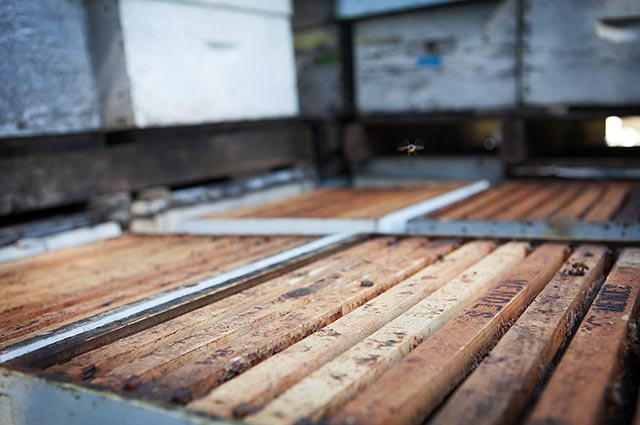 A solitary bee flies above bee boxes in Calaveras County, California. (Photo: Chris Jordan-Bloch / Earthjustice)
A solitary bee flies above bee boxes in Calaveras County, California. (Photo: Chris Jordan-Bloch / Earthjustice)
In 2005, commercial beekeepers around the country started making an alarming discovery upon opening their bee boxes. A few males and a weakened queen bee were crawling around the comb, but the worker bees—the ones that forage in the flowers and supply the nectar that is the lifeblood to the colony—were gone.
While bee disappearances have occurred throughout the history of beekeeping, the mid-2000s events represented astounding losses, with researchers estimating that nearly one-third of all honey bees in America vanished.
 Bees working in Portland, Maine. (Photo: Jason P. Smith for Earthjustice)
Bees working in Portland, Maine. (Photo: Jason P. Smith for Earthjustice)
In the eight years since scientists coined the phenomenon Colony Collapse Disorder, commercial beekeepers continue to see unprecedented die-offs leading them to speculate that something sinister has changed in the world of bees.
CCD has been attributed to a number of causes including mite infestation and pathogens, but for many beekeepers across the world, a primary suspect is a class of pesticides known as neonicotinoids. These chemicals came onto the market in the late-1990s and were approved in 2000 for application to corn, America’s #1 cash crop. It is now estimated that 90 percent of all corn seeds are coated with German agro-chemical manufacturer Bayer’s neonicotinoid pesticide. With the rise of the chemical’s use, there has been a steep drop off in honey production in the Corn Belt of the United States.
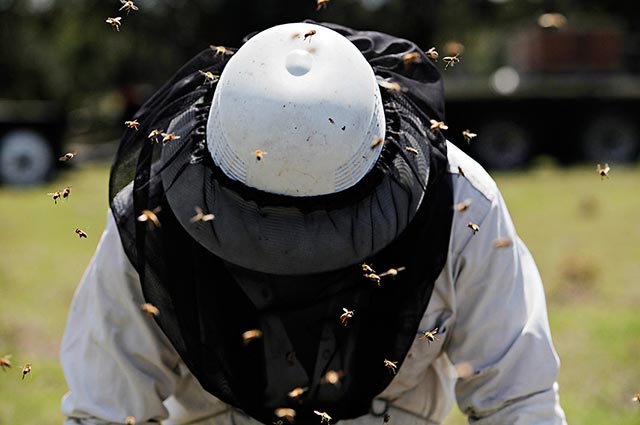 A beekeeper works in Umatilla, Florida. (Photo: Melissa Lyttle for Earthjustice)
A beekeeper works in Umatilla, Florida. (Photo: Melissa Lyttle for Earthjustice)
Neonicotinoids have largely replaced more toxic, but less systemic pesticides known as organophosphates. During die offs that involved organophosphates, dead bees were usually found in large numbers around the hive. But with CCD, there are hardly any bodies to be found—the majority of bees just disappear.
A growing body of studies show that neonics, even in low doses, impair bees’ ability to navigate. The foraging worker bees that come into contact with the pesticide may get disoriented, flying around until they eventually run out of gas, lost in the field. With a loss of worker bees bringing food back to the hive, the entire colony suffers.
 Beekeeper Bill Rhodes. (Photo: Melissa Lyttle for Earthjustice)
Beekeeper Bill Rhodes. (Photo: Melissa Lyttle for Earthjustice)
Bill Rhodes is a Florida beekeeper and former pro-football player. Since the 1970s, Rhodes has been shipping bees across the country, migrating hives to Wisconsin, the Dakotas, out to California and back down to Florida. Chemical companies claim the neonics aren’t to blame for CCD and instead point to things like varroa mite infestation, starvation, and even beekeeper neglect.
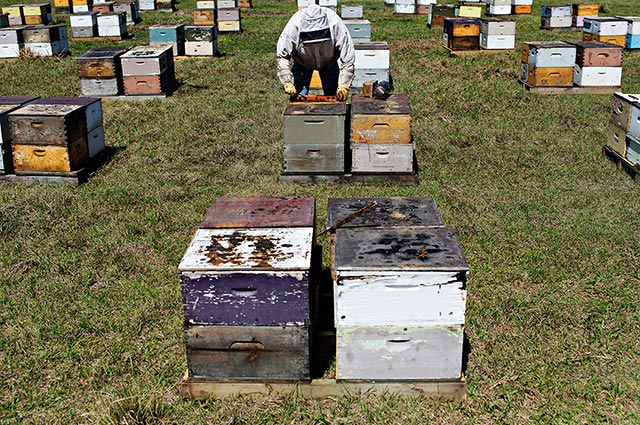 Bee boxes in Umatilla, Florida. (Photo: Melissa Lyttle for Earthjustice)
Bee boxes in Umatilla, Florida. (Photo: Melissa Lyttle for Earthjustice)
A certain amount of colony loss per year is normal in the business. To make up for the lost colonies, a beekeeper will typically divide healthy colonies and coax them up to strength by introducing a new queen bee. Rhodes usually splits his colonies during the fall and says they’ve always bounced back to full strength continuing to produce the fall honey that keeps them going through the winter.
In 2005 when he split his colonies, he noticed his bees didn’t respond the same way. “They didn’t want to make any honey to speak of,” Rhodes says. “They didn’t want to expand. We went ahead and split them anyway and fed them supplemental feed, and the bees just never did squat. We thought, what in the world happened to these bees?”
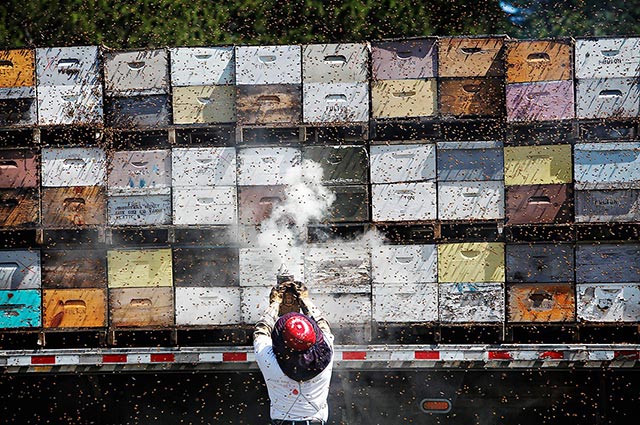 A beekeeper pumps smoke around the hives which have been loaded onto a truck for transport. (Photo: Melissa Lyttle for Earthjustice)
A beekeeper pumps smoke around the hives which have been loaded onto a truck for transport. (Photo: Melissa Lyttle for Earthjustice)
Almond growers rely entirely on honey bees to pollinate their orchards. California, the state that produces nearly 82 percent of the world’s almonds, must import honey bees from other states for the bloom to sustain their $2.3 billion-a-year crop.
At the end of summer 2005, Rhodes was scheduled to ship 16 semi-truck loads of bees from South Dakota to California where they would work the almond bloom. Before shipping them, Rhodes’ foreman in South Dakota called him up and told him the bees were looking odd. Because Rhodes had contracts to fulfill, he went ahead and shipped them anyway.
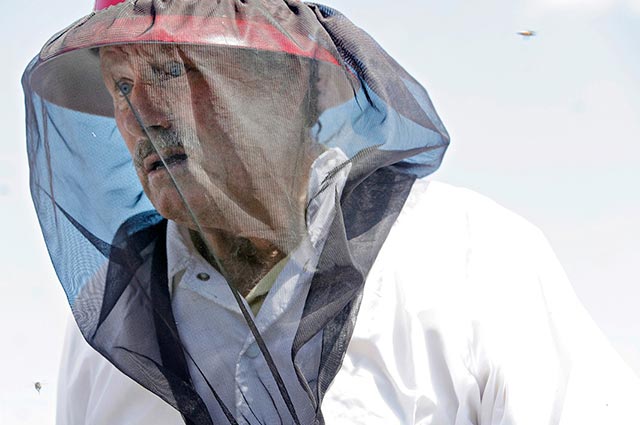 Beekeeper Bill Rhodes. (Photo: Melissa Lyttle for Earthjustice)
Beekeeper Bill Rhodes. (Photo: Melissa Lyttle for Earthjustice)
Once in California, Rhodes went out to inspect the hives, marking them and returning within the week to check again. “The hive would look entirely different,” Rhodes said. “It was like something just had it by the throat and was just pulling the strength from it. We had no idea what it was.”
He later learned that a neonicotinoid chemical had been approved in 2004 for sunflowers. They were the last thing that bloomed in South Dakota before Rhodes moved his bees out of the state. Out of the 16 semi-truck loads of bees he sent to California in 2005, only two of them were fit for pollinating the almonds. Rhodes estimates it cost him between $800,000 and $900,000 that year in losses.
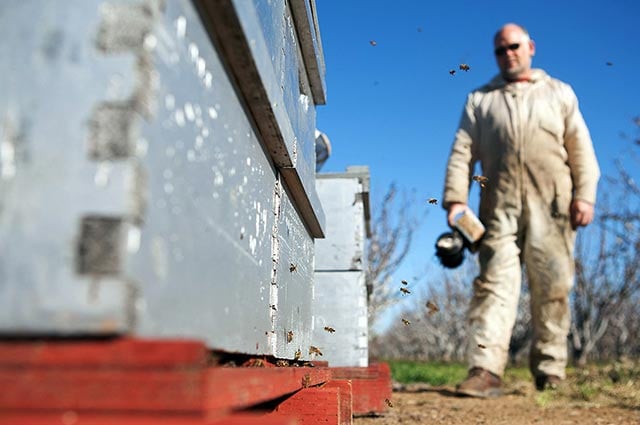 Beekeeper Jeff Anderson minds his colonies in a California cherry orchard. (Photo: Chris Jordan-Bloch / Earthjustice)
Beekeeper Jeff Anderson minds his colonies in a California cherry orchard. (Photo: Chris Jordan-Bloch / Earthjustice)
“Colony Collapse Disorder: Beekeepers hate that term,” says Jeff Anderson, owner of California-Minnesota Honey Farms. It’s not a disorder or disease that’s causing the abnormal bee mortality, he reckons. “It’s the systemic insecticides that we’re using on just about every crop that we grow now.”
Anderson joined a group of commercial beekeepers, the Pollinator Stewardship Council and other beekeeping organizations in a lawsuit represented by Earthjustice to challenge the Environmental Protection Agency’s decision to rubber-stamp the approval of sulfoxaflor, a neonicotinoid insecticide that shows extreme toxicity to bees.
On September 10, the Ninth Circuit Court of Appeals rejected the EPA’s approval of sulfoxaflor, concluding that EPA violated federal law when it approved sulfoxaflor without reliable studies regarding the impact that the insecticide would have on honeybee colonies. The Court vacated EPA’s approval, meaning that sulfoxaflor may not be used in the U.S. unless, and until, EPA obtains the necessary information regarding impacts to honeybees and re-approves the insecticide in accordance with law.
Earthjustice has also been asked to represent beekeepers in another case, taking on the neonicotinoids clothianidin and thiamethoxam, which have also shown to be highly toxic to bees.
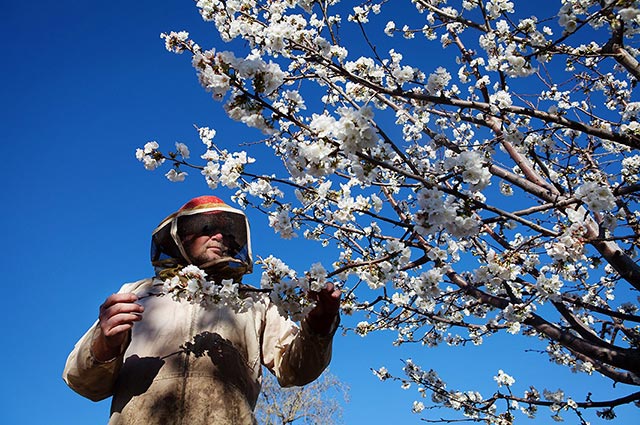 Anderson works with his bees during the California spring bloom. (Photo: Chris Jordan-Bloch / Earthjustice)
Anderson works with his bees during the California spring bloom. (Photo: Chris Jordan-Bloch / Earthjustice)
Anderson spends the springtime in California when the nut and fruit trees are flowering. During the almond bloom in early spring about 1.6 million colonies, or half the nation’s honey bees, are actively pollinating the Golden State’s orchards. Anderson used to commit all his colonies to cherries after almonds, but because of the pesticide issues he’s been dealing with in Minnesota, he’s now decided to “rest” many of his bees, turning them out in natural forage areas and wildflowers to detox them.
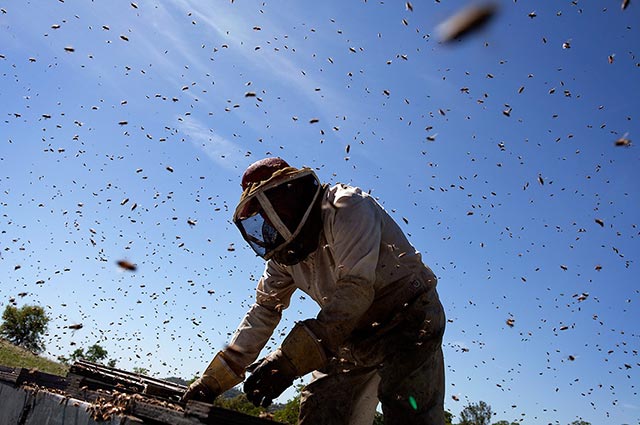 Anderson checks on the bee boxes. (Photo: Chris Jordan-Bloch / Earthjustice)
Anderson checks on the bee boxes. (Photo: Chris Jordan-Bloch / Earthjustice)
Anderson keeps bees in both California and Minnesota and says the Midwestern bees are faring far worse. Not only are the crops in the heartland blasted with pesticides, but farmers have moved away from traditional crop rotation practices, instead planting vast expanses of mono-crops like corn or soybeans.
“The environment has become toxic and sick bees don’t make honey. Most of it is pesticide-related, but when you also just have a field of soybeans and dirt, or corn and dirt, or wheat and dirt, unless that particular crop is actively in bloom, you have a forage desert for pollinators.”
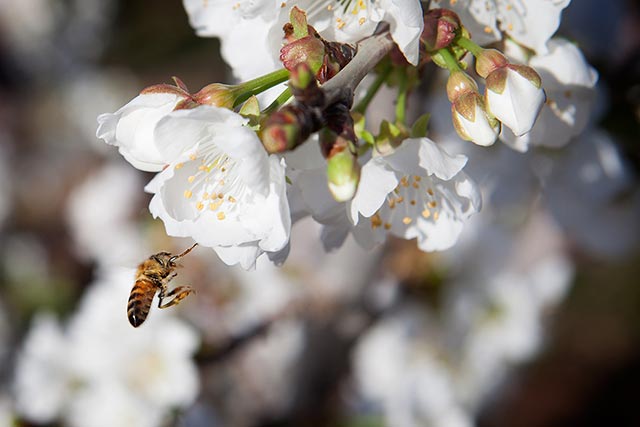 A honey bee alights on a cherry blossom in Stockton, California. (Photo: Chris Jordan-Bloch / Earthjustice)
A honey bee alights on a cherry blossom in Stockton, California. (Photo: Chris Jordan-Bloch / Earthjustice)
Bees have an electromagnetic charge turning them into little flying magnets, which carry and transfer pollen from flower to flower. This is how the trees reproduce. It takes about two hives, or 60,000 bees, to pollinate each orchard acre.
By some counts, pollinators such as bees and butterflies are responsible for one out of every three bites of food Americans eat.
Honey bees in particular are responsible for pollinating many of our super-foods: the berries, nuts, avocados, and many other colorful and nutrient-rich fruits and vegetables that make up the healthiest parts of our diet.
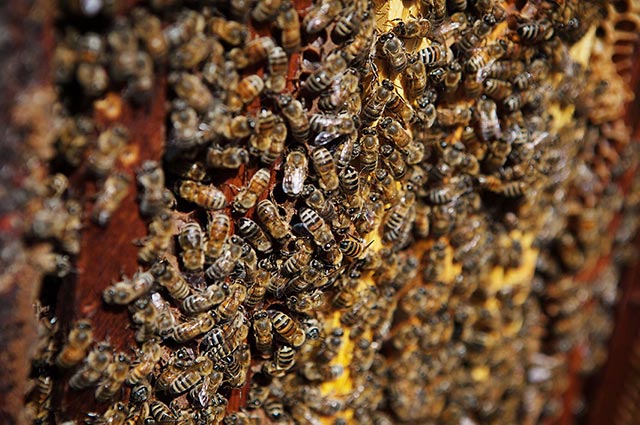 A healthy hive, filled with worker bees. (Photo: Chris Jordan-Bloch / Earthjustice)
A healthy hive, filled with worker bees. (Photo: Chris Jordan-Bloch / Earthjustice)
A healthy hive has 30,000 bees, 94 percent of which are the female worker bees.
The worker bee’s job is to go out to the flowers and gather nectar from the blossoms to bring back to the colony. The nectar mixes with an enzyme in the bees’ mouth and is deposited into the honeycomb in the hive. The nectar naturally has high water content, but the bees help to evaporate the excess water by fanning their wings over the honeycomb. Once the liquid turns into a thick syrup, the bees cap the hole with wax. During the long winter months when there are no flowers, the hive survives by feeding off the capped honey reserves.
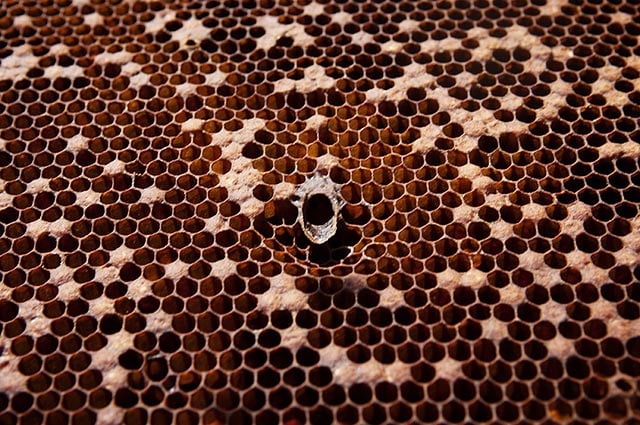 An unhealthy hive, where the colony attempted to hatch its own queen. (Photo: Chris Jordan-Bloch / Earthjustice)
An unhealthy hive, where the colony attempted to hatch its own queen. (Photo: Chris Jordan-Bloch / Earthjustice)
Spotty, uneven brood pattern where the eggs are laid indicates a sick or aging queen bee. When a colony determines its queen is impaired, it will drive her out of the hive and try to replace her with a new queen.
The large contusion in the middle of the comb above indicates where the colony attempted to hatch its own queen bee, feeding the female larva copious amounts of a special food mixture called royal jelly that will help her develop ovaries for reproduction. Beekeepers prefer not to allow the colony to create its own queen because it slows down pollination and honey production. A beekeeper instead will examine the brood pattern in the honeycomb and root out a weak queen and replace it with a new queen cell.
Jeff Anderson says queen bees used to live as long as two to three years. Now they only last about six months.
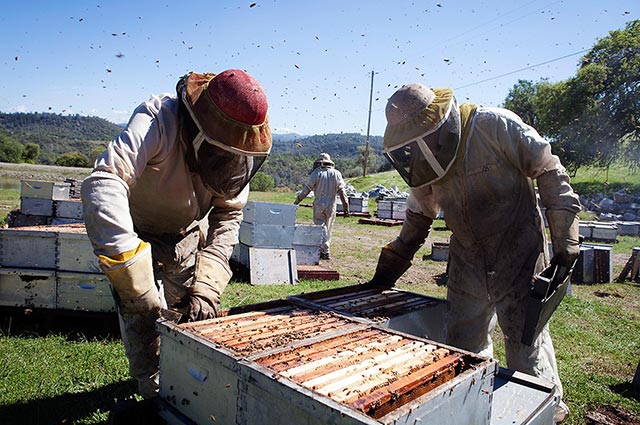 The Anderson family works among bee boxes in California. (Photo: Chris Jordan-Bloch / Earthjustice)
The Anderson family works among bee boxes in California. (Photo: Chris Jordan-Bloch / Earthjustice)
To make up for lost hives, Anderson used to split about 25 to 30 percent of his colonies to keep his population stable. Since CCD, he’s had to split upwards of 110 to 130 percent of his hives, meaning he’s divided hives that have already been split once before in a given year.
A single beekeeper can manage about 1,000 hives when the hives are healthy, Anderson says. Since the emergence of CCD, now a beekeeper can only handle about 500 hives to keep them alive.
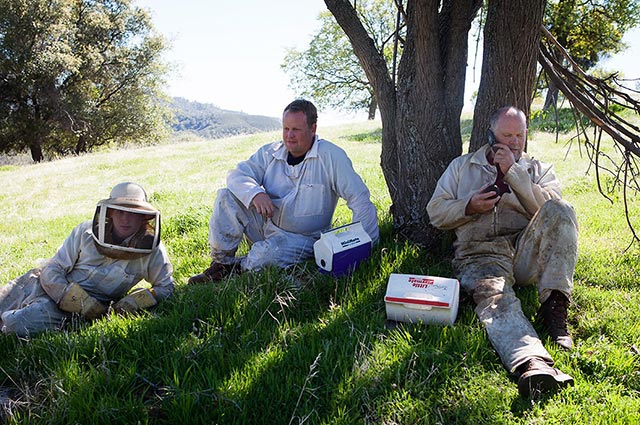 Beekeeper Bill Anderson takes a lunch break with sons Kyle, far left, and Jeremy. (Photo: Chris Jordan-Bloch / Earthjustice)
Beekeeper Bill Anderson takes a lunch break with sons Kyle, far left, and Jeremy. (Photo: Chris Jordan-Bloch / Earthjustice)
Anderson has enlisted several of his children to help him with the business. He inherited the beekeeping business from his father-in-law and had hoped his sons would take up the family trade, but he’s a realist about the future of the business. “Three of my boys are currently working for me. All three will tell you they are not sure they want to become owners of a bee business.”
Anderson has been beekeeping since 1976 and has never experienced the level of loss as he’s seen in recent years. Last winter, he lost 67 percent of his colonies. His typical winter colony loss prior to 2005 was about 6 percent.
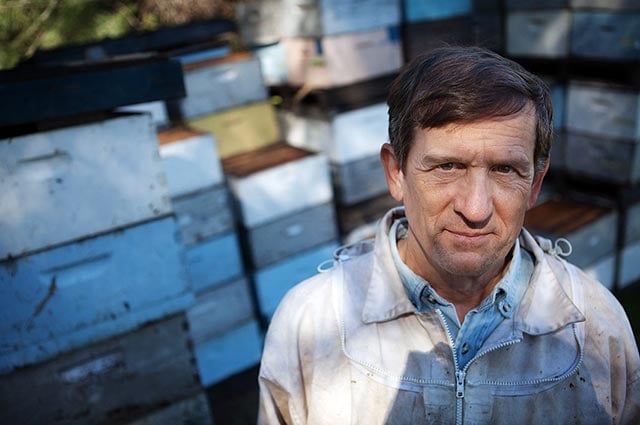 Beekeeper Steve Ellis. (Photo: Chris Jordan-Bloch / Earthjustice)
Beekeeper Steve Ellis. (Photo: Chris Jordan-Bloch / Earthjustice)
Minnesota beekeeper Steve Ellis spent more than $20,000 in 2014 trying to save colonies that he’d shipped to California thinking they were healthy, but which quickly fell apart upon arrival to the West Coast.
He sent 450 weakened colonies to a specialist in southern California who was able to keep 280 of the colonies alive. However, only 40 of those colonies were fit enough to be used for pollination in almonds, meaning 90 percent represented a financial loss.
“I fell in love with beekeeping and I’m not ready to leave the marriage yet,” Ellis says. “But you do have to be a little bit on the practical side too. How many years of loss am I willing to bear with right now before I start to say maybe I’m going to have to cut back and become a hobbyist?”
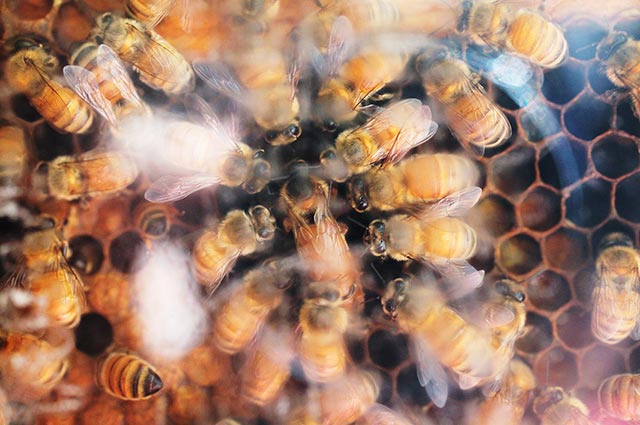 Bees in Umatilla, Florida. (Photo: Melissa Lyttle for Earthjustice)
Bees in Umatilla, Florida. (Photo: Melissa Lyttle for Earthjustice)
Ellis likens the bees that are exposed to neonics to cancer patients. Even if they don’t die from the chemical, their immune systems are weakened enough to make them susceptible to other ailments.
“When bees come in contact with a lot of these chemicals, it makes them sick and it also makes them mad,” Ellis said. “It’s part of the disorientation. They’re jumpy. They sting more, which also kills them. It’s no fun to work bad bees. It’s just about the most depressing thing a beekeeper can do.”
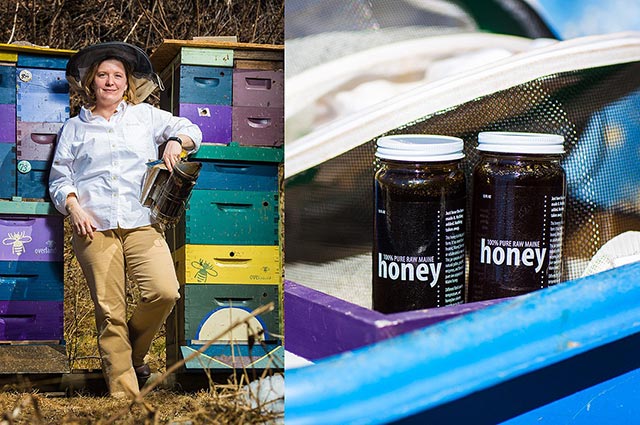 Beekeeper Erin MacGregor-Forbes. (Photo: Jason P. Smith for Earthjustice)
Beekeeper Erin MacGregor-Forbes. (Photo: Jason P. Smith for Earthjustice)
Commercial beekeepers aren’t the only ones suffering from the impact of neonicotinoids. Erin MacGregor-Forbes is an urban beekeeper in Maine who runs a small-scale operation more for fun than profit. Her backyard beekeeping operation keeps the neighborhood pollinated and her 100 or so colonies produce between 7,000 to 10,000 lbs of honey each year, which she sells at stores locally.
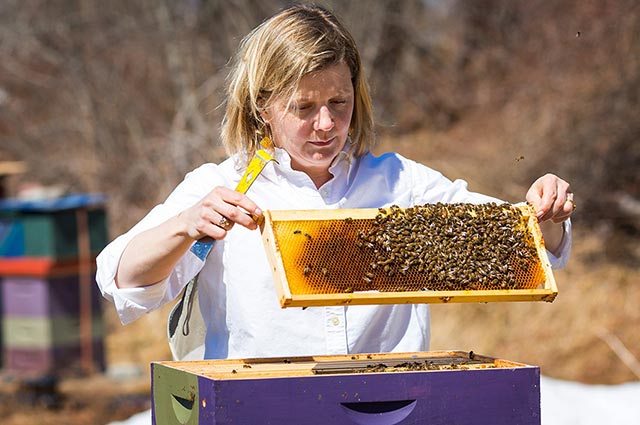 Beekeeper Erin MacGregor-Forbes. (Photo: Jason P. Smith for Earthjustice)
Beekeeper Erin MacGregor-Forbes. (Photo: Jason P. Smith for Earthjustice)
While MacGregor-Forbes’ bees don’t face the same stress from toxic mega-farms, hers are susceptible to a different kind of threat: Pesticide-doused plants that people are unknowingly putting in their gardens.
Many of the plants available for sale at Home Depot, Lowes, or other garden supply stores have been treated with neonicotinoids. Lawn fertilizers also frequently contain weed-killing substances that persist in the soil for years. While bees don’t bother with grass, if a homeowner decides to build a garden or plant bee-friendly clover in tainted soil, the bees will be exposed.
“Homeowners are planting flowers in their yards thinking they’re helping bees and they’re basically planting poison plants,” she says.
 Dr. Kegley shows attorney Greg Loarie a bee box in the backyard of her home in California. (Photo: Chris Jordan-Bloch / Earthjustice)
Dr. Kegley shows attorney Greg Loarie a bee box in the backyard of her home in California. (Photo: Chris Jordan-Bloch / Earthjustice)
Earthjustice is working on a number of pesticide-related cases to protect bees, the environment, and people who may be exposed to toxic chemicals. In addition to the successful lawsuit against EPA for approving sulfoxaflor, Earthjustice attorney Greg Loarie has been developing a case with the help of pesticide researcher Susan Kegley to force the California Department of Pesticide Regulation to better regulate neonicotinoids. Earthjustice is also in court to take on other bee-killing pesticides, such as Valent U.S.A. Corporation’s Venom Insecticide and Mitsui Chemical Agro’s Dinotefuran 20SG.
“At the end of the day, the honey bee crisis is a human health crisis,” Loarie says. “If we can’t save bees, we can kiss goodbye the most nutritious part of the food pyramid. That’s just not an outcome we at Earthjustice are willing to accept.”
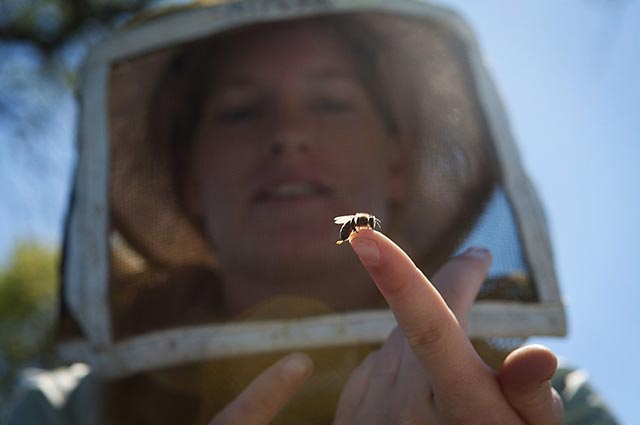 Alyssa Anderson, daughter of the Jeff Anderson, the beekeeper in California, holds a baby bee. (Photo: Chris Jordan-Bloch / Earthjustice)
Alyssa Anderson, daughter of the Jeff Anderson, the beekeeper in California, holds a baby bee. (Photo: Chris Jordan-Bloch / Earthjustice)
“The honey bees are great communicators of the insect world because they have figured out how to produce honey and also how to survive human manipulation,” says backyard Maine beekeeper Erin MacGregor-Forbes.
“Plants have hired bees to do their sexual reproduction and the bees have hired beekeepers to advocate for them and all the other wild species. Honey bees are building up a little system of advocates that other species of insects aren’t able to gather because they don’t communicate with us in the same way honey bees do.”
5 Days Left: All gifts to Truthout now matched!
From now until the end of the year, all donations to Truthout will be matched dollar for dollar up to $50,000! Thanks to a generous supporter, your one-time gift today will be matched immediately. As well, your monthly donation will be matched for the whole first year, doubling your impact.
We have just 5 days left to raise $50,000 and receive the full match.
This matching gift comes at a critical time. As Trump attempts to silence dissenting voices and oppositional nonprofits, reader support is our best defense against the right-wing agenda.
Help Truthout confront Trump’s fascism in 2026, and have your donation matched now!